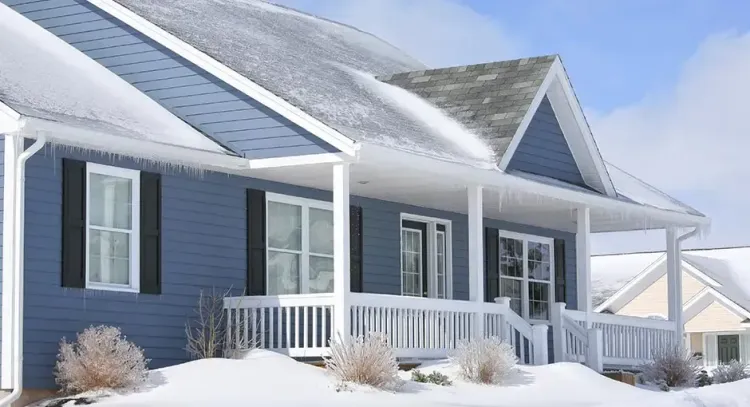Contrary to misconceptions based on outdated equipment, homeowners in cold climates experience exceptional, year-round comfort with today’s high-performance heat pumps. Available in ducted and ductless varieties, heating and air conditioning systems from Mitsubishi Electric provide heating at temperatures as low as -13º F.
How Does It Work?
Mitsubishi Electric uses a patented process called “flash injection” to allow the heat pump to produce such superior heating. A typical refrigerant loop in a heat pump collects heat energy from outside and transfers it inside. The flash injection process uses a bypass circuit to reroute a portion of the refrigerant to two places.
- Hot refrigerant flows back to the indoor coil to enhance heating.
- Colder refrigerant is injected back into the compressor to allow it to run at faster speeds to produce high-performance heat exchange.
In cold climates, heat pumps typically experience a decrease in pressure, refrigerant flow rate and operational capacity. Variable-capacity heat pumps with Hyper-Heating INVERTER® (H2i®) technology allow for higher compressor heating speeds at lower outdoor air temperatures, without putting extra strain on the unit or potentially causing long-term damage to the compressor. These are true cold-climate heat pumps designed to deliver 100% of heating capacity down to 5 F. This innovation means homeowners in all climates can experience the benefits of INVERTER-driven, variable-capacity heat pumps listed below:
- Consistent Room Temperature: No Ups and Downs, Ons and Offs: Conventional heat pumps experience uncomfortable and extreme temperature fluctuations while INVERTER-driven heat pumps self-adjust, providing consistent room temperature, even when the outdoor temperature dips below zero.
- Consume Only The Energy You Need: INVERTER-driven zoning systems deliver only the amount of hot air needed to achieve the desired temperature – no more, no less.
- Heats Up Quickly: It takes traditional systems a very long time to reach the desired temperature, while the high rotation speeds of INVERTER-driven systems allow for quick and efficient air conditioning and heating.
- Energy Use is Even and Steady: Every time the compressor turns on in a traditional unit, energy consumption surges. On startup, variable-capacity heat pumps use less current, avoiding spikes in energy usage.
Homeowners who live in extreme climates were previously left out in the cold when it comes to electric-powered, variable-capacity heat pumps. For decades, they were tethered to electric baseboard heaters, propane heaters and traditional, inefficient, fossil-fuel-burning systems. Those days are gone. Third-party reports and studies, such as the field study published by The Center for Energy and Environment (Cee) in Minnesota, continue to demonstrate how heat pumps can provide energy-efficient and consistent home comfort, no matter how high or how low the mercury may go.









